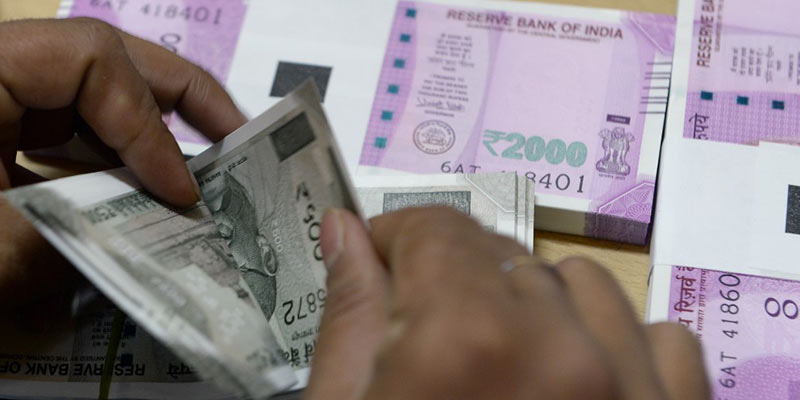- India
- May 23
Central govt’s debt at 45.7% of GDP
According to a new document released by the finance ministry, the central government’s debt witnessed a marginal decline and stood at 45.7 per cent of GDP at end-March 2019. It is 86.73 lakh crore in FY19, showed the 9th edition of the Status Paper on Government Debt.
It covers details of the financing operations of the fiscal deficit of the central government during the year 2018-19.
Status Paper on Govt Debt
Since 2010, the central government has been publishing an annual Status Paper on debt that provides a detailed account of the overall debt position of the country.
Since 2015-16, the publication also includes, ‘Handbook of Statistics on Central Government Debt’ and ‘Debt Management Strategy’, which were subsumed in the Status paper, thus bringing all public debt-related information at one place.
This document enhances transparency by providing a detailed account of debt operations during the year.
Government’s debt portfolio is characterised by a prudent risk profile and the government is primarily resorting to market linked borrowings for financing its fiscal deficit.
The document also contains a debt management strategy for the financial years from 2019-20 to 2021-22 which will guide the borrowing plan of the government.
Classification of central govt debt
The central government debt includes all liabilities of the central government contracted against the Consolidated Fund of India (defined as Public Debt), and liabilities in the Public Account — called Other Liabilities.
Public Debt denotes liabilities payable by the Centre, which are contracted against the Consolidated Fund of India, as provided under Article 292 of the Constitution of India. Central government’s Public Debt was Rs 75.9 lakh crore (or 40.0 per cent of GDP) as at end-March 2019.
Public Debt is further classified into Internal and External Debt. Internal debt consists of Marketable Debt and Non-Marketable Debt.
Marketable Debt comprises government dated securities and Treasury Bills, issued through auctions.
Non-marketable debt comprises of intermediate Treasury Bills (14-day ITBs) issued to state governments/UT of Puducherry and select central banks, special securities issued against small savings, special securities issued to public sector banks/EXIM Bank, securities issued to international financial institutions, and compensation and other bonds.
Under Article 292 of the Constitution of India, the Centre may borrow from within as well as outside the territory of the country. External Debt at current exchange rates stood at 5.9 per cent of central government’s total liabilities and 6.8 per cent of public debt at end-March 2019.
Other Liabilities include liabilities on account of state provident funds, reserve funds and deposits, other accounts, etc. Other Liabilities of state governments stood at Rs 10.8 lakh crore at end-March 2019, up from Rs 10.1 lakh crore at end-March 2018.
Total liabilities as reported in the Union Budget have been adjusted to reflect the position of the outstanding debt as an outcome of fiscal operations of the Centre.
Highlights of the 9th edition
* Central government debt stood at 45.7 per cent of GDP at end-March 2019, witnessing a marginal decline from 45.8 per cent at end-March 2018.
* General Government Debt (GGD)-GDP ratio worked out to 68.6 per cent at end-March 2019, slightly lower compared to 68.7 per cent at end-March 2018.
* 94.1 per cent of total central government debt at end-March 2019 was domestic debt. Sovereign external debt constituted 2.7 per cent of GDP or Rs 5.12 lakh crore at end-March 2019, implying low currency risk to debt portfolio. The sovereign external debt is entirely from official sources, providing safety from volatility in the international capital markets.
* The share of marketable securities in internal debt stood at 84.4 per cent at end-March 2019, slightly lower than 86.1 per cent at end-March 2018.
* Public debt in India is primarily contracted at fixed interest rates, with floating internal debt constituting 0.9 per cent of GDP at end-March 2019, thereby insulating the debt portfolio from interest rate volatility and providing stability to interest payments.
* IP-RR ratio (interest payments to revenue receipts) of the Centre was 37.5 per cent in 2018-19 as compared to 35.6 per cent in 2012-13. Average Interest Cost (AIC) of the Centre remained unchanged at 7.1 per cent for the same period. The IP-RR ratio and AIC for states at end-March 2019 stood at 11.2 per cent and 7 per cent, respectively. AIC is observed to be well below the nominal GDP growth rate, indicating that India is comfortably placed in terms of debt sustainability parameters.
Manorama Yearbook app is now available on Google Play Store and iOS App Store

